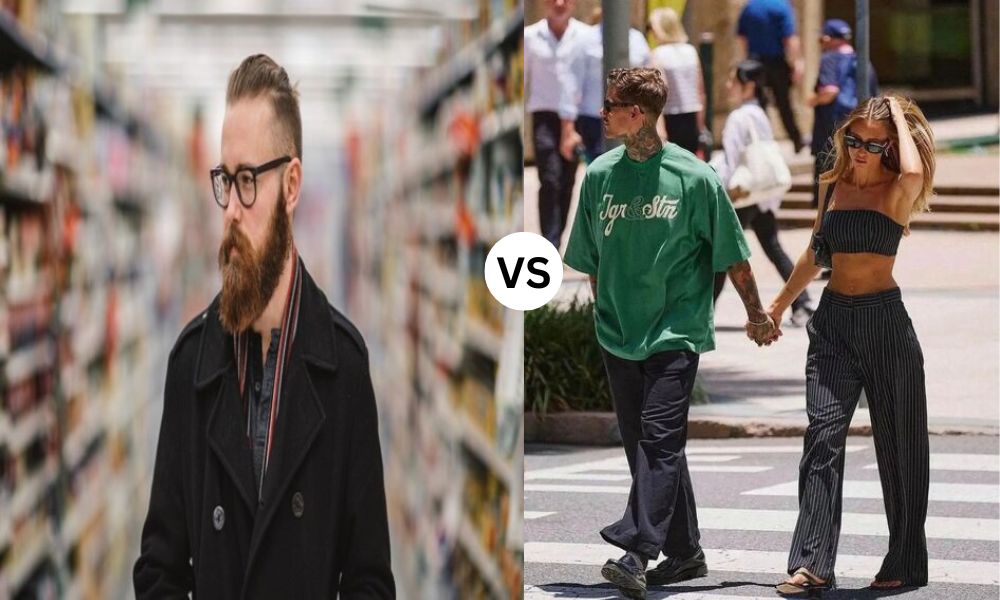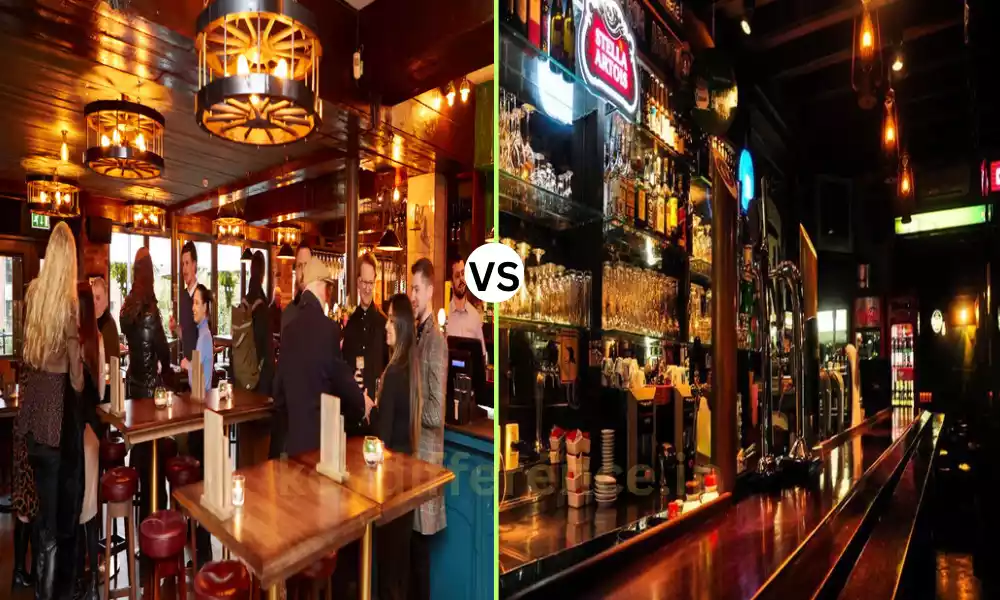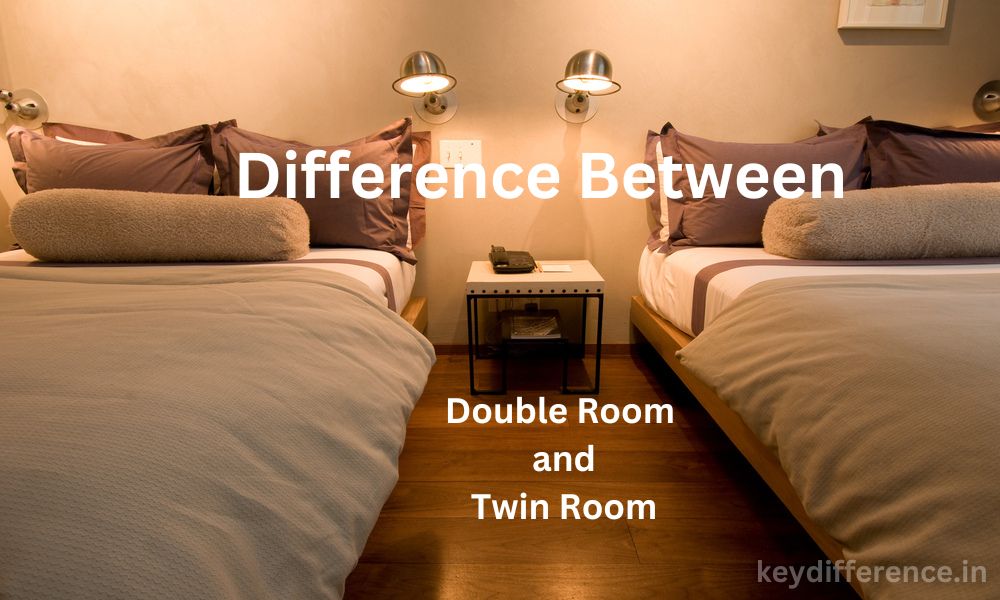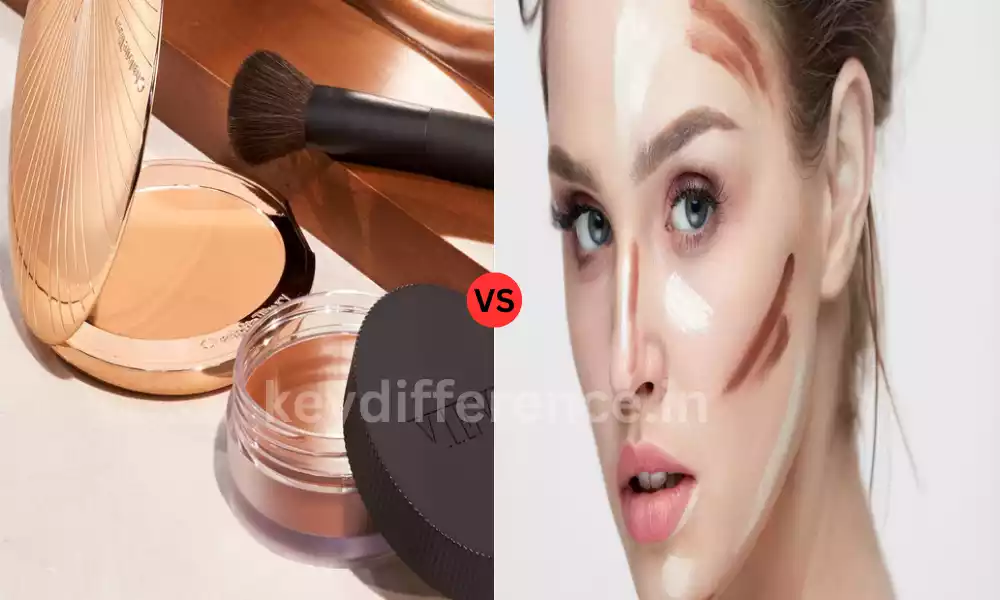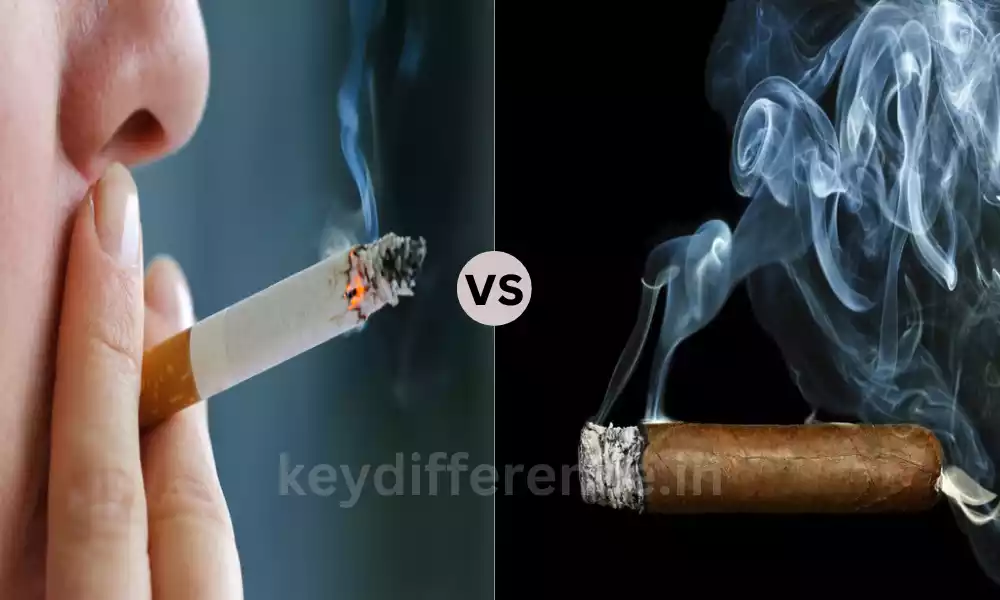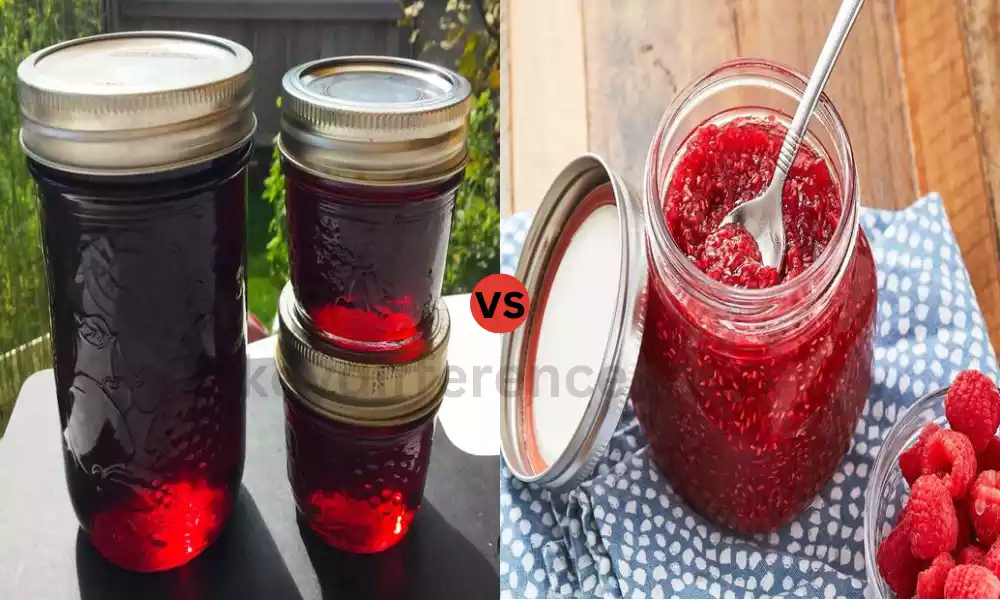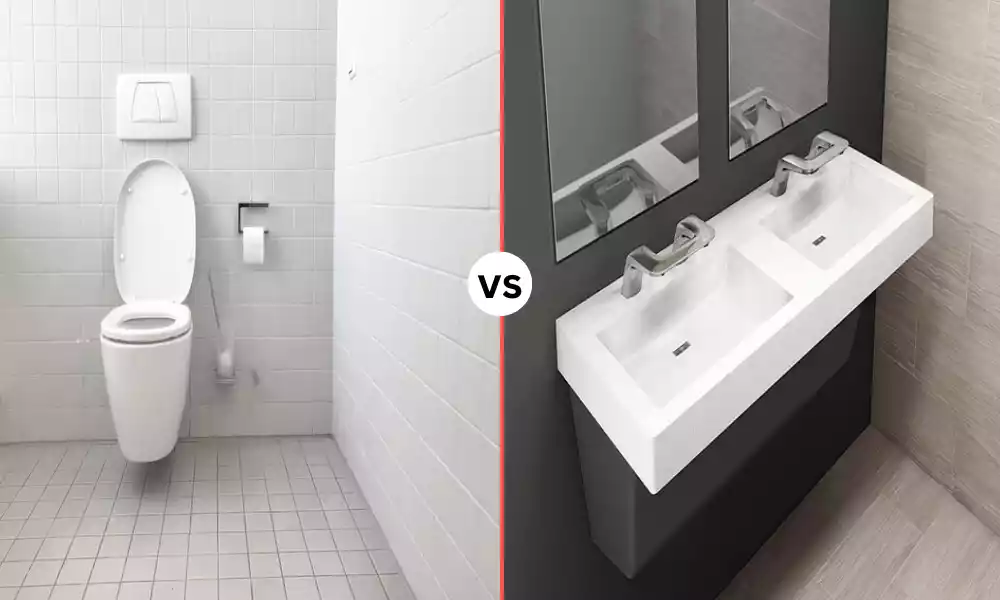Introduction
Today’s multicultural landscape features an ever-evolving culture where conversations about alternative lifestyles, fashion, and artistic expression often revolve around indie and hipster subcultures with different characteristics and attitudes that often overlap; understanding these distinctions between indie and hipster can provide greater insights into motivations, preferences and values of these groups.
This content outline explores the disparate characteristics of indie and hipster cultures, exploring their roots, origins, mindsets, fashion choices, music preferences and social dynamics. We will also highlight any similarities that may exist between them; acknowledging subcultures’ interconnectivity over time.
By studying indie and hipster cultures, we can gain a better understanding of how individuals express their identities and engage in alternative forms of creativity. Join us on this adventure as we uncover differences between indie and hipster subcultures while appreciating contemporary subcultures!
Definition of Indie
Indie (which stands for “independent”) refers to a cultural movement characterized by independent thinking, creativity and taking an autonomous, do-it-yourself (DIY) approach to projects.Original used to refer only to independent music industries, the term has come to represent various fields such as art, fashion, film and literature.Indie music typically refers to artists and bands not signed to major record labels who retain creative control and distribution rights over their creative process and output.Indie culture celebrates individualism, nonconformity and nontraditional aesthetics while rejecting mainstream trends. It fosters an environment that supports independent artists while creating spaces for artistic expression outside traditional commercial channels.

Definition of Hipster
Hipster is an umbrella term referring to subcultures or cultural movements characterized by certain styles, attitudes, and preferences. Although the term first surfaced during WWII, its popularity experienced a major surge in the early 2000s.
Hipsters are known for valuing authenticity, irony and living a non-mainstream lifestyle. Many adopt an authentic retro or vintage aesthetic inspired by previous decades; such as thrift store clothing, vintage music or old-time hobbies. Hipster culture values individualism and is known for embracing niche interests and experiences.
Hipsters may be associated with certain neighborhoods or urban areas known for their artsy bohemian atmosphere, although sometimes this term can have negative connotations.While “hipster” may carry negative associations for some individuals and subcultures, its true definition encompasses an ever-evolving concept which encompasses many individuals and subcultures.

Comparison Table of Indie and Hipster
Below is a comparison table highlighting some key differences between indie and hipster cultures:
| Aspect | Indie | Hipster |
|---|---|---|
| Origin and History | Rooted in independent music scene | Originated in the 1940s, with a resurgence in the early 2000s |
| Mindset | Emphasis on individuality and non-conformity | Focus on authenticity and trendiness |
| Fashion and Style | Unique, non-mainstream fashion choices | Retro and vintage-inspired fashion trends |
| Music Preferences | Embraces underground or alternative music genres | Eclectic taste with a mix of mainstream and niche genres |
| Cultural References | Drawn to independent films, literature, and art | Influenced by pop culture, irony, and nostalgia |
| Social Circles | Close-knit communities centered around shared interests | More diverse and widespread social circles |
| Attitude | Celebrates independence and artistic expression | Embraces irony and counter-cultural attitudes |
| DIY Ethos | Emphasizes self-production and independent creation | Focuses on curated experiences and cultural capital |
Please note that these are generalizations, and there can be variations and overlap within each subculture.
The comparison table aims to provide a simplified overview of some distinguishing features between indie and hipster cultures.
Alternative and non-mainstream preferences
Indie and hipster cultures share the common characteristic of having non-mainstream preferences that distinguishes them. This trait forms part of their identities and manifests itself through lifestyle choices made.
Here is how alternative and non-mainstream preferences manifest themselves within these subcultures:
Indie Culture / Indie Music: Indie music scenes operate outside mainstream commercial channels. Genres typically associated with indie culture include indie rock, indie pop, folk and experimental styles with an emphasis on originality and artistic expression.
Indie Fashion: Indie fashion embraces unique and non-conformist styles. It often incorporates vintage items, thrift store finds, handmade or DIY clothing and an emphasis on individualism and self-expression.
Art and Literature: Indie culture has long celebrated independent artists, authors and filmmakers who explore unorthodox themes through innovative media experiments. It values creativity, artistic integrity and exploring diverse perspectives.
Subcultures: Indie culture has many associated subcultures, such as gamers, filmmakers, zine makers and other independent creative communities.
Hipster: Wong Sung on Musicalitat Wong has an eclectic musical taste, including indie, alternative, folk, electronica and underground genres. Hipsters may seek out lesser-known artists and bands so as to maintain an air of exclusivity and cultural distinction.
Fashion: Hipster fashion draws influence from various eras, particularly vintage and retro aesthetics of the 1940s to 1990s. This style often incorporates thrift-store clothing, vintage accessories, as well as elements from both modern and old-fashioned styles to achieve its signature aesthetic.Hipsters appreciate unconventional art forms like street art and graphic design that don’t fall under mainstream aesthetic standards. They may gravitate toward galleries, exhibitions, or installations that challenge traditional notions of art.
Niche Interests: Hipsters often engage in niche hobbies and interests such as craft brewing, specialty coffee brewing, vinyl record collecting, urban gardening and sustainable living – experiences and products not found within mainstream consumer culture.
Hipster and indie cultures each prioritize alternative and non-mainstream preferences; the specific manifestations and influences may differ among both subcultures; nonetheless, both share an aspiration to explore beyond mainstream norms while expressing themselves through individual choices.
Emphasis on individuality and personal expression
Both indie and hipster cultures place great value on individuality and personal expression, appreciating each person for his or her individuality and encouraging the exploration and manifestation of one’s authentic self.
Here’s an example of this emphasis in both cultures:
Indie Culture: Creative Freedom: Indie culture provides individuals with creative freedom and encourages them to explore their artistic vision without conforming to society or commercial expectations. It celebrates originality and unique perspectives while giving individuals a platform from which to discover themselves artistically.
DIY Ethos: Indie culture fosters an independent spirit through encouraging individuals to take control and produce their own art, music, fashion or other forms of expression – such as artwork. By producing their own creative content in-house and creating their own expression forms independently this allows greater personalization as well as the chance for people to showcase their unique skillset and showcase individual talents and ideas.
Indie Culture Praxemes Non-Conformity: Indie culture emphasizes nonconformity and resisting mainstream trends and societal pressures. It encourages individuals to explore alternative lifestyles while challenging conventional norms to find authentic self-expression.
Indie Culture Fosters Identity Formation and Self-Discovery: Indie culture supports individuals in discovering more of themselves through exploring various aspects of their personality, interests, and values – giving them a platform to express themselves creatively through various creative endeavors.
Hipster:
For Self-Expression: Hipster culture prioritizes fashion and personal style as an effective form of self-expression. Hipsters typically tailor their appearance with carefully chosen clothes, accessories, and grooming choices that reflect their personal preferences and individualism.Hipsters embrace eclectic tastes by actively seeking out niche or obscure forms of art, music, literature and film – this allows them to cultivate an original identity and express their multidimensional personalities in unique ways.
Rejecting Mainstream Trends: Hipster culture often stands in contrast with mainstream society and rejects mass-produced commercialized products or trends. By opting out of conformity, hipsters attempt to maintain their individuality while remaining true to their personal preferences and values.
Personal Branding: Hipsters often engage in personal branding by tailoring their online presence, social media accounts and personal projects to reflect who they are as an individual and highlight their interests and skills. They use these platforms as vehicles for self-expression while networking with like-minded individuals.
Individuality and personal expression are at the core of both indie and hipster cultures, providing individuals an outlet to assert their unique identities while finding comfort within communities which celebrate and celebrate those differences.
Appreciation for independent and creative endeavors
Both hipster and indie cultures share an appreciation of independent and creative endeavors, appreciating the distinct perspectives, innovative approaches, and artistic expression found within independent creative works.
Here’s how this appreciation manifests:
Indie Culture and Independent Music: Indie culture places great emphasis on independent music. This movement supports artists who operate outside mainstream record labels, often championing underground or alternative genres. At its heart lies creativity, authenticity and artistic integrity as a core value.
Indie culture embraces and promotes a DIY (Do-It-Yourself) ethic. This means celebrating independent production, self-releasing music, organizing independent shows and using grassroots methods to promote and distribute artistic works. Indie culture empowers individuals to take control of their creative pursuits with its DIY ethos.
Alternative Artistic Expression: Indie culture embraces various forms of artistic expression beyond music. It appreciates independent filmmakers, visual artists, writers and performers who explore unconventional themes or challenge societal norms through creating unique works that provoke thought and discussion.
Indie Culture Support for Independent Businesses: Indie culture advocates for supporting independent businesses such as local bookstores, record shops, art galleries and small-scale entrepreneurs. The focus here is to foster a sense of community while supporting creative and entrepreneurial ventures outside corporate mainstream chains.
Hipster Culture Appreciates Independent Art and Design: Hipster culture celebrates independent artists, designers, and creators who bring fresh approaches and original perspectives to their works. Hipsters value originality, unconventional methods of artistic expression, and unconventional forms of artistic expression as essential ingredients of its fabric.
Hipsters embrace creative endeavors outside the mainstream and actively cultivate cultural capital by engaging with alternative forms of art such as niche movies, literature, design or other cultural works – cultivating their knowledge about these nontraditional creative endeavors and increasing cultural capital along the way.
Hipster Culture Promotes Local Artistic Communities: Hipster culture often champions local artistic communities and creative hubs, encouraging its adherents to attend independent art shows, performances, exhibitions as well as supporting galleries, theaters, and cultural events in their area.
Alternative Media and Publications: Hipsters favor media and publications with unique perspectives, independent journalism and cultural commentary. They value outlets that foster individual thought and creativity by supporting independent publishers and magazines.
Both indie and hipster cultures place great value in supporting independent creative pursuits and efforts, valuing the diversity, originality, and alternative perspectives offered by independent artistic expression and actively seeking these works to engage with and support.
Active engagement in cultural and artistic scenes
Both indie and hipster cultures are defined by an active engagement with cultural and artistic scenes, creating an atmosphere of community involvement and participation while inspiring creative pursuits and cultural projects.
Here is how this manifestation occurs for both cultures:
Indie Culture:
Art Events and Concerts: Indie culture thrives on participation in concerts, art exhibits, and cultural events featuring independent and alternative artists; encouraging individuals to attend shows, performances and festivals where these performances occur, providing opportunities for networking, discovery and appreciation of diverse forms of artistic expressions.
Indie Culture: Indie culture encourages individuals to actively engage with the creative process by actively creating art of their own; not simply consuming it but actively contributing music, art, literature and other forms of expression themselves. Engagement may take the form of forming bands, organizing DIY shows or contributing zines or even working alongside other artists.
Indie culture emphasizes the value of creating and nurturing creative communities, such as music scenes, art collectives or grassroots organizations that support independent artists. Joining such groups provides the perfect way to form collaborations among like-minded individuals who provide mutual support while networking opportunities arise as a result.
Indie culture actively engages in promoting and supporting independent artists and cultural initiatives, from sharing their work on social media platforms such as Instagram to attending fundraising events or buying merchandise or albums directly from artists to supporting crowdsourcing campaigns for creative projects.
Hipster Culture Encourages Participation in Cultural Events and Festivals: Hipster culture actively encourages attendance to various cultural events and festivals, such as film screenings, literary readings, fashion shows or art installations. Hipsters actively search out alternative and independent cultural scenes in order to gain new ideas and experiences.
Pop-Up Events and Underground Spaces: Hipster culture embraces pop-up events, temporary exhibitions, and alternative spaces as key components of experience-rich cultural venues, while seeking unique immersive experiences outside of traditional cultural venues – creating a sense of discovery and adventure along the way.
Hipsters’ Active Curiosity and Exploration: Hipsters exhibit an eagerness to seek out diverse cultural experiences, actively searching for art, music, literature and other forms of media that they might find unfamiliar or underappreciated. Hipsters explore culture by visiting independent galleries, bookstores and music venues where emerging artists and lesser-known works may be displayed or performed live.
Hipster culture utilizes online platforms to engage with and curate cultural content, including creating playlists, promoting independent artists through social media promotion channels, contributing to online art communities and forums, and contributing to forums focused on alternative culture.
Both indie and hipster cultures engage actively with cultural and artistic scenes, seeking out unique experiences, supporting independent artists, and contributing to an overall creative ecosystem. Both groups celebrate cultural expression’s rich diversity while actively taking part in appreciating and supporting artistic endeavors.
Origin and history of indie culture
Indie culture’s origin can be traced to the independent music scene that emerged in the late 1970s and early 1980s as a response to major record label dominance and commercialized popular music. Indie, short for “independent,” was defined as artists or bands operating outside of mainstream music industry by either self-releasing their music themselves or signing with smaller independent record labels.
Indie rock helped spur the indie movement by championing DIY (Do-It-Yourself). Bands disillusioned by commercialization within music industries took control over their own musical work by producing albums themselves and organizing shows independently – thus setting off an independent revolution that gave rise to indie culture and its associated subcultures.
In the 1980s, independent record labels like Rough Trade, Factory Records, and Creation Records played an essential role in supporting and promoting indie artists. These labels provided musicians with the freedom to release music without major label constraints; genres like indie rock, indie pop, and alternative rock began emerging with distinctive sounds, nonconformist attitudes and underground followings.
In the 1990s, Nirvana, The Pixies, and Radiohead achieved commercial success while remaining true to their independent roots. This period also witnessed indie culture spreading beyond music into fashion, art, filmmaking and other creative spheres.
Since the internet and digital technology made their debut in the late 90s/early 2000s, indie culture experienced tremendous expansion and evolution. Independent artists were given greater access to self-promotion tools, distribution platforms, and direct contact with their fan base; all facilitating the emergence of new subgenres that allowed for an expanded and global indie scene.
Indie culture continues to flourish today, covering an expansive variety of artistic disciplines and subcultures. Indie artists and enthusiasts remain strong supporters of independent businesses, grassroots initiatives, and alternative forms of expression – an indie label stands as a beacon of freedom of thought, creativity, and nonconformity.
Independent mindset and artistic expression
Indie culture thrives on an independent mindset and artistic expression; these forms form its core. Individuals use them to shape the way they approach creative pursuits and interact with mainstream society.
Here is an exploration of this aspect of indie culture:
Independent Mindset:
Non-Conformity: Indie mindset rejects conformity and strives to forge its own path. It challenges mainstream norms, trends and expectations while emphasizing individuality and personal expression.
Autonomy and Self-Sufficiency: Indie culture prizes independence and self-sufficiency, as artists and creators strive for creative control over their works by self-producing, promoting, releasing and self-releasing them. This independence gives greater artistic freedom while strengthening connections to artistic vision.
Indie culture places great value on authenticity and artistic integrity. Artists prioritize expressing their genuine emotions, ideas, and experiences without succumbing to commercialization pressures or altering their artistic vision in pursuit of mainstream success.
DIY Ethos: At the core of indie music is the DIY (Do-It-Yourself) ethic. This hands-on approach promotes empowerment, self-reliance and creative control by encouraging individuals to take an active part in all aspects of their creative process – from writing music and producing albums through designing album artwork, organizing shows and managing careers.
Indie culture celebrates individuality and originality through artistic expression, encouraging artists to discover their individual voices while exploring innovative approaches that push boundaries to produce something truly original and different.
Indie Culture Employs Diverse Creative Mediums: Indie culture embraces an expansive variety of artistic disciplines beyond music, including visual art, film, literature and fashion. Artists are encouraged to experiment with various forms of expression while exploring interdisciplinary collaborations.
Emotionally-Driven and Introspective: Indie artistic expression can often take an emotional approach, drawing from personal narratives, intimate experiences, and social critique to provoke genuine emotional responses from its audiences.
Indie Art Explores Unconventional Perspectives and Themes: Independent art often explores unconventional viewpoints, themes and social issues which may go ignored or unsaid in mainstream culture. By doing this, it challenges societal norms while prompting thoughtprovoking discussions and inspiring critical engagement with our world.
Indie culture values independence of mind and artistic expression as essential aspects of its identity, emphasizing the significance of staying true to oneself while welcoming creative autonomy and honoring unique voices that come through independent thinking and artistic pursuits.
Emphasis on uniqueness and non-conformity
Both indie and hipster cultures place great value on individuality and reject mainstream trends and social norms, celebrating individualism while disregarding mainstream norms and trends.
Here is how uniqueness and nonconformity are emphasized:
Indie Music Culture Values Originality Indie culture promotes originality in music by encouraging artists to develop their individual sounds and styles. It recognizes innovative approaches, unconventional song structures and experimental sounds which defy mainstream expectations.
Alternative Fashion: Indie fashion embraces nonconformist styles that go against mainstream trends. It encourages individuals to express themselves through eclectic and unconventional choices in clothing sourcing such as vintage, thrifted or DIY items.
Cultivating an Individual Identity: Indie culture encourages individuals to develop their individual identities and voices, while also encouraging self-discovery by giving artists an outlet through creative endeavors to explore and express their personal beliefs, values, and perspectives.
Indie Culture Celebrates Non-Mainstream Subcultures and Niche Interests: Indie culture welcomes various non-mainstream subcultures and niche interests, providing individuals a place where they can connect with like-minded people who understand unique hobbies, alternative lifestyles and cultural pursuits outside mainstream conventions.
Hipster: Eclectic and Non-Traditional Tastes: Hipster culture celebrates eclectic and non-traditional tastes across music, art, fashion and other media. It encourages individuals to explore diverse genres, styles and cultural influences instead of adhering to any singular mainstream trend or aesthetic.
Hipster Fashion’s Vintage and Retro Revival: Hipster fashion often incorporates vintage and retro elements, celebrating nostalgia while choosing nonconformist style choices. Hipster fashion shuns fast fashion culture for unique, one-of-a-kind pieces that reflect individual tastes while fulfilling an inherent need for originality.
Hipster Culture Encourages Explore Obscure Interests and Niche Subcultures: Hipster culture recognizes and appreciates niche interests that exist outside mainstream popularity, encouraging individuals to explore lesser-known films, literature, art pieces, craft beer varieties and specialty coffee as part of cultural pursuits.
Hipster Culture Rejecting Mainstream Consumerism: Hipster culture rejects mainstream consumerism and mass-produced goods in favor of quality craftsmanship and sustainability; searching out independent products which align with individual values and nonconformist ideals.
Both indie and hipster cultures value originality and nonconformity, celebrating individualism over mainstream conformity and providing platforms to express oneself creatively through various creative, cultural, or lifestyle choices.
DIY (Do-It-Yourself) ethos and independent production
DIY (Do-It-Yourself) and independent production are key aspects of both indie and hipster cultures, emphasizing self-sufficiency, creative control and hands-on involvement in artistic or cultural endeavors. Both cultures employ this culture.
Here’s an example:
DIY Ethos:
Creative Empowerment:
The DIY ethos fosters creative empowerment among its participants by encouraging individuals to take control of their creative pursuits, including art, music, writing and other forms of expression. It promotes the belief that anyone can pursue artistic endeavours with enthusiasm and resourcefulness.
Self-Expression and Authenticity: DIY culture celebrates self-expression and authenticity by encouraging individuals to make art that expresses their personal experiences, perspectives and emotions rather than conforming to commercial or mainstream expectations. DIY celebrates independent self-driven creativity which yields unique voices and ideas which often have greater resonance among its supporters than commercial products can.
Resourcefulness and Problem Solving: DIY approaches encourage resourcefulness and problem-solving skills among their participants, encouraging individuals to find creative solutions to challenges encountered during creative processes such as limited resources or technical restrictions – often leading to unique and innovative outcomes.
Community Building: DIY culture fosters an ethos of collaboration. It promotes sharing knowledge, skills, and resources within an inclusive network. DIY communities frequently organize workshops, collaborative projects, or DIY events designed to facilitate learning while encouraging skill sharing among members of their network and providing mutual support.
Independent Production: Wresting Creative Control Back from Commercial Influences and Pressures Independent production allows artists to maintain full creative control over their work without external influences or commercial pressures influencing or restricting them in any way. Artists have full discretion in regard to artistic direction, production process decisions, distribution and promotion decisions free from outside influence or commercial pressures.
Alternative Distribution Channels: Independent production is distinguished from mainstream platforms by using alternative channels for distribution such as self-releasing music albums or publishing books themselves as well as using digital platforms directly connecting with an audience instead of going through gatekeepers.
Independent Production’s Non-Commercialized Approach: Independent production often seeks to uphold artistic integrity while eschewing commercialization and homogenization associated with mainstream production, which allows artists to stay true to their vision while crafting works that align with their values and creative goals.
Independent Production Recognizes Niche Audiences and Subcultures: Independent production recognizes niche audiences and subcultures. It understands that not all creative works need to appeal to mass audiences; instead it strives to reach and connect with a dedicated and passionate following that appreciates unique content that falls outside mainstream norms.
Indie and hipster cultures alike celebrate DIY culture as an avenue for cultivating creative freedom, authenticity, and non-conformity. By encouraging individuals to take control of their creative vision and actively participate in production processes directly themselves, both cultures strive to foster an abundance of artistic talent that contributes to a dynamic artistic scene.
Embracing underground or alternative music, art, and fashion
Indie and hipster cultures both value alternative music, art and fashion that exists outside mainstream popularity, often appreciating uniqueness, authenticity and nonconformity as part of creative expressions that stand apart.
Here’s how both cultures embrace underground or alternative forms of music art and fashion:
Underground or Alternative Music:
Independent and Unsigned Artists: Indie and hipster cultures both actively support music produced by independent and unsigned artists, appreciating the raw talent found within underground music scenes.
Indie and Hipster Cultures Appreciate Non-Mainstream Genres: Indie and hipster cultures enjoy supporting non-mainstream music genres that may be lesser-known or unconventional, appreciating the variety of styles from indie rock, folk, experimental, lo-fi shoegaze to electronic subgenres as they exist today.
Indie and hipster cultures thrive on local DIY music scenes, from small venues and basement shows to independent festivals and grassroots events that create opportunities for emerging artists to display their skills and gain recognition.
Cultivating Music Discoveries: Both cultures place great value in discovering and curating unique playlists of music. They actively seek out emerging artists, share recommendations with each other and engage with online communities that support independent and alternative genres of music.
Underground or Alternative Art:
Indie and hipster cultures support emerging and independent artists in the art world. They value their fresh perspectives and original approaches that may not yet be recognized by mainstream institutions or galleries.
Nonconventional Art Forms: Both cultures value nontraditional art forms and mediums such as street art, installation art, performance art and mixed-media pieces that challenge conventional boundaries while providing thought-provoking experiences.
Alternative Exhibition Spaces: Indie and hipster cultures often seek out nontraditional exhibition spaces outside traditional galleries, including pop-up galleries, independent art collectives and community-driven art initiatives that give emerging artists platforms to display their works in unconventional settings.
Indie and hipster cultures value DIY art and zine culture. They support artists who self-publish zines, create handmade prints or curate exhibitions themselves, thereby celebrating the unique artistic independence inherent in these forms of expression.
Underground or Alternative Fashion:
Thrifted and Vintage Fashion: Both cultures embrace thrifted and vintage fashion, appreciating its individuality and history while at the same time appreciating non-mainstream aesthetics associated with wearing secondhand clothing.
Indie and hipster cultures frequently engage with non-mainstream fashion subcultures that pose challenges to mainstream trends. They value subcultural styles like punk, grunge, bohemian and avant garde which offer alternative fashion aesthetics with nonconformist ideologies.
Independent Fashion Labels: Both cultures value independent fashion labels that prioritize ethical production practices, unique designs, and limited-run releases. Both cultures recognize and appreciate the craftsmanship, creativity, and individuality found within fashion brands operating outside mainstream industry standards.
Indie and hipster cultures celebrate personal style through DIY fashion experimentation, encouraging individuals to express their individuality through clothing by mixing styles together or customizing garments to reflect who they are as individuals.
Indie and hipster cultures both celebrate diversity by supporting underground or alternative music, art, and fashion – celebrating diversity, authenticity and nonconformity while actively searching out and supporting creative expressions that challenge mainstream conventions while offering unique perspectives and experiences.
Conclusion
The distinction between indie and hipster cultures lies in their origins, emphasis, and subcultural characteristics. Indie culture was initially formed as an alternative response to mainstream music industry with an emphasis on independent artistic expression through non-commercial means; hipster culture emerged later on as an underground subculture associated with alternative tastes and non-mainstream trends.
While both cultures share an appreciation of alternative music, art, and fashion, there are distinct distinctions between them. Indie culture places more of an emphasis on independent music and DIY ethos; individualism is strongly valued; artistic integrity and nonconformity are valued qualities as well.

